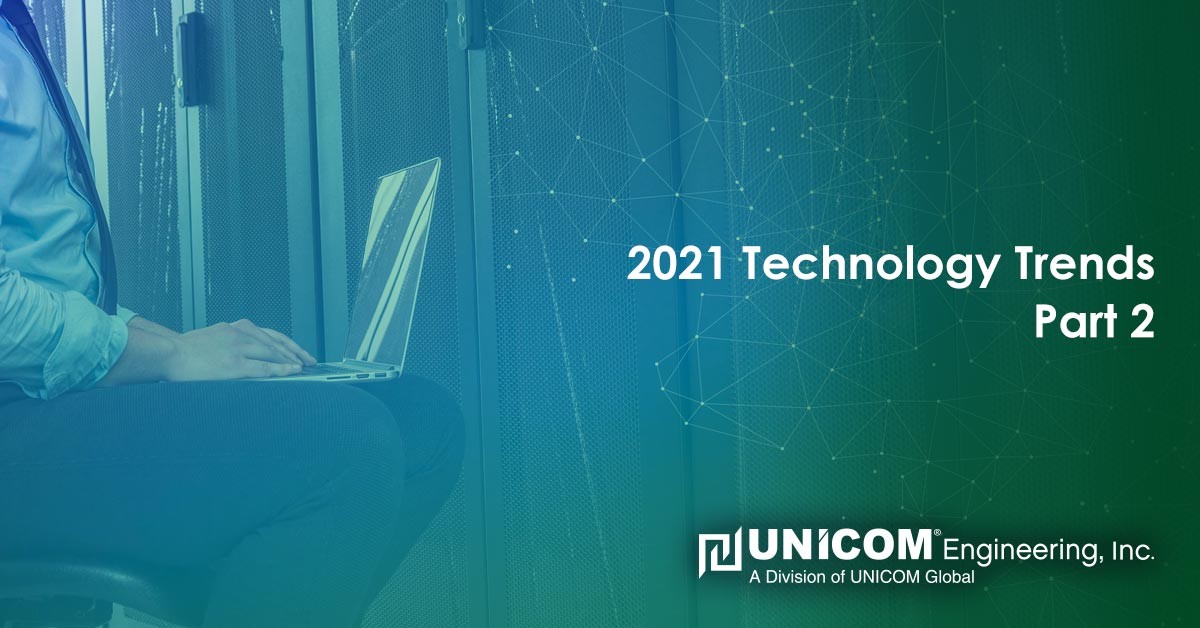Below is the second in a two-part series (part 1) featuring the latest data storage trends for 2021 and what they mean to your organization. As we discussed in our last segment, the experts at Dell Technologies proclaimed in their 2020 Server Trends and Observations Brief the 2020s to be the 'Decade of Data,' and have gone on to share many key predictions for the years to come. From laptops to smartphones and beyond, consumers will use more and more connected devices - all of which produce and require more data.
As a result, the more data we produce, the more data there is to move, and it follows that we must move it just as fast. This trend increases the burden on the hardware of all kinds, from the largest server to the smallest device. In short, more data requires more power - the power to store, the power to process, and, of course, the electrical power to run it all.
The Power to Store: NVDIMMs are Driving Larger Storage Capacities
Without a doubt, data can enable better business decisions. But first, it needs a place to reside. The exponential increase in network-connected devices has created an unprecedented demand for storage, which comes at a higher and higher cost.
Still, not only does data need to be stored, it must be accessible. Newer, standardized NVDIMMs are creating higher storage capacities from the server level downward. As a result, lower costs per gigabyte can be expected.
To further enhance accessibility, newer memory modules will connect more easily to CPU hardware and firmware. Therefore, newer servers will offer memory encryption and increased memory speed by better caching and eliminating drivers.
Additionally, memory tech developments like phase-change, spin-torque magnetic, and carbon nanotube will create more choices in capacity and power requirements. These innovations will also enable shorter boot and recovery times and increased performance at a lower overall cost.
The Power to Process: 10NM and Interconnected Wafers
Still, while the storage and retrieval of data are crucial, a server can only perform as well as its CPU. Thanks to silicon process geometries at 10 NMs and lower, 2021 will see the rise of more powerful CPUs than ever. To serve increased processing demands, we'll see greater CPU counts, more IO lanes and DDR channels, and better-embedded memory options. These developments will enable servers to scale up to more affordably than ever and industry leaders such as Intel are helping pave the path.
And in addition to better connectivity to the CPU, the structure within it is also improving. Traditionally one monolithic die has been used to connect multiple chips inside the CPU. Moving forward, chip builders are using smaller, interconnected wafers to allow for increased processing power, reduced cost, and little to no latency or bandwidth sacrifice.
These CPU improvements have arrived not a moment too soon as the demands of AI, VR, and edge applications are currently upon us. Whether it's remote users expecting an in-office experience or new applications asking more from servers, the need for processing will continue on its one-way slope upward.
The Power to Run it All: Bottlenecks and More Efficient Single-Socket Servers
As stunning as advances in storage and processing can be, they come at a price: electrical power. In 2021 and beyond, the server density will continue to increase, and 100G+ Ethernet will grow in adoption. And, as discussed, usage of non-volatile, solid-state memory will grow. All three of these factors will increase power requirements to 300 watts per CPU or higher.
To meet the rising demand for wattage, data center managers will have three choices. They can reduce the number of servers per rack to maintain their current power density, upgrade to lower power servers, or maintain their current density but upgrade their data center's power and cooling capabilities.
In response, some IT leaders will seek solace in co-location facilities. Unfortunately, service providers will face the same issues. In 2020, Dell Technologies predicted that average rack power requirements would double within 18 months. To make things worse, edge facilities often lack the power capabilities of cloud data centers.
Coming to the rescue for edge locations will be newer, higher-performing, more efficient, single-socket servers. Many of these machines will feature additional, specialized processors external to the CPU that enhance graphics or AI-intensive application performance.
How Your Data Center Can Meet Demands
As network-connected devices multiply, they'll be relied upon to deliver timely, robust, and reliable data. In short, the race for information has no foreseeable finish line. Hardware leaders like Dell Technologies and Intel will continue to advance the way we process, store, and power it all. Ultimately, the path to better data will continue to be paved with better infrastructure.
UNICOM Engineering stands ready to help as your clients demand accelerated performance from your data. With decades of experience from design to branding to logistics and support, our team of experts will provide you with the right services to increase your solution's success. For more information, check out our Flawless Execution video and contact us today to schedule your consultation.
